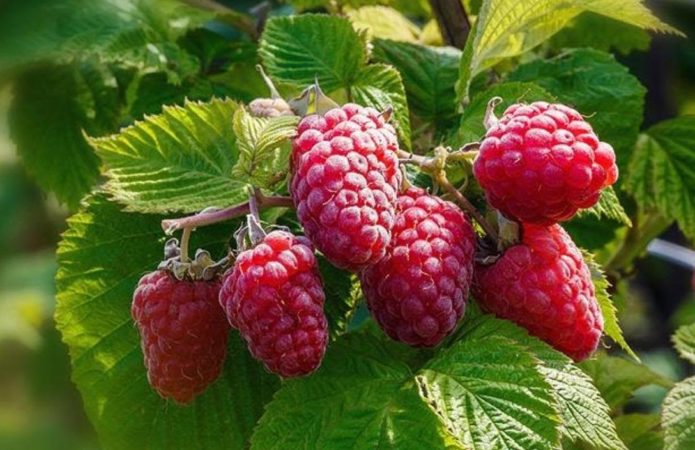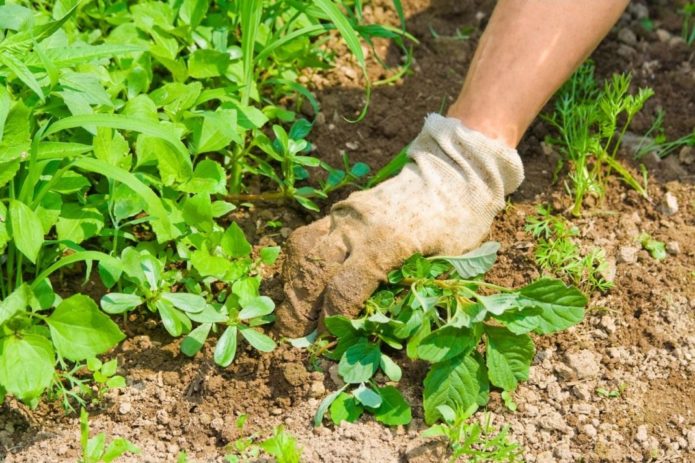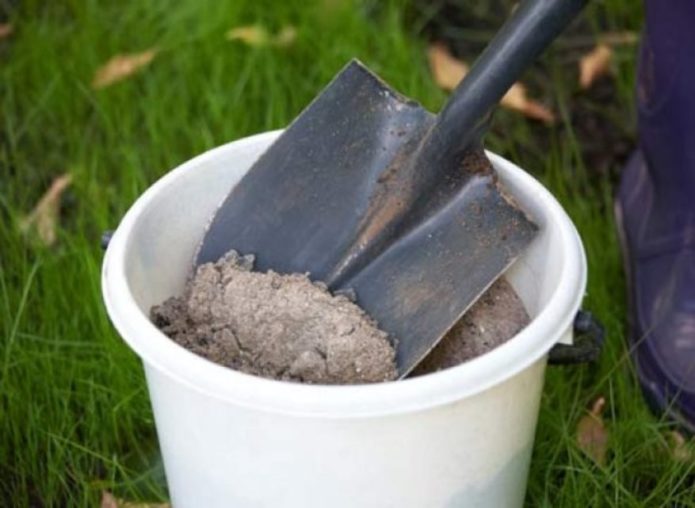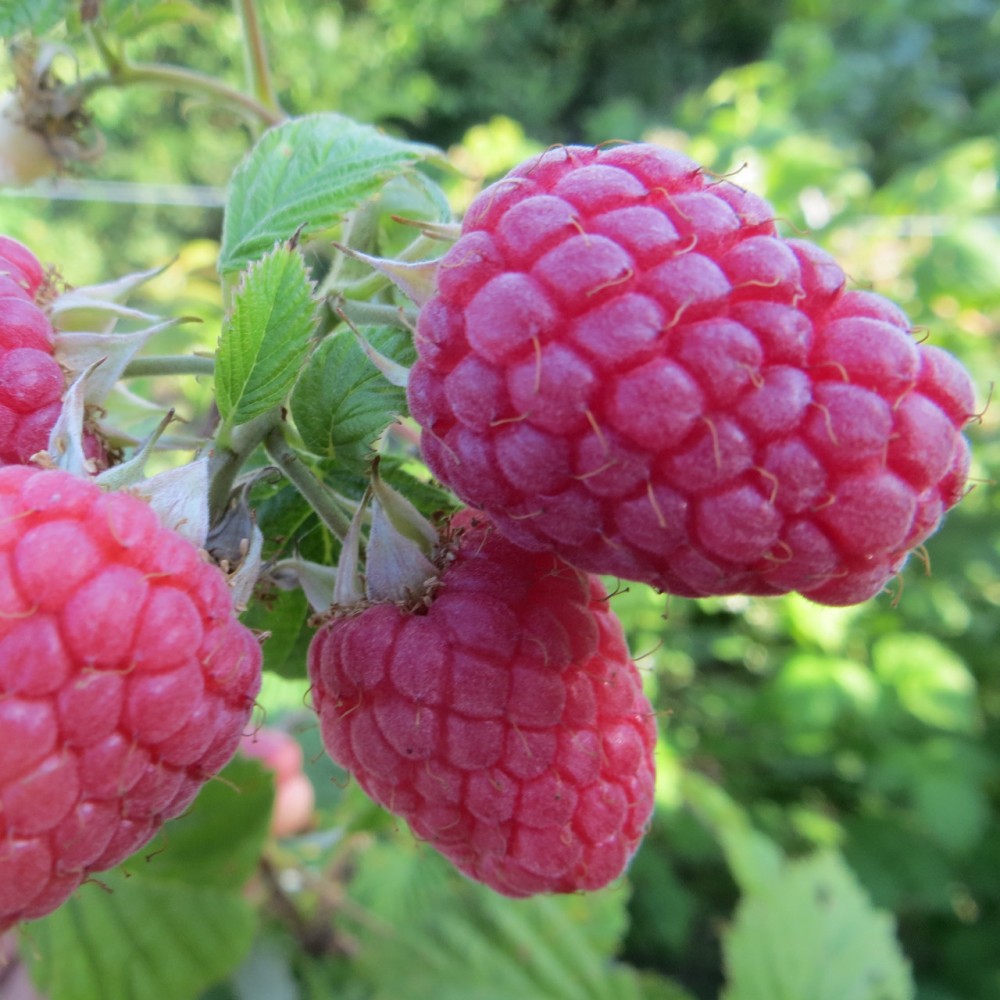Raspberries are one of the most beloved and useful berries in Russia from the Far East to Moscow. In order for the harvest to please with abundance every year, the crop must be properly looked after, namely fed. Many novice gardeners have the question of how to feed raspberries in the fall. There are a lot of options, the main thing is that the fertilizer contains the necessary trace elements. It is also important to feed the plant on time.
Content
Do I need autumn feeding
The most important thing for plants is the root system. The deeper it is, the better the culture tolerates frost. In raspberries, this system is shallow, and therefore you should help the shrub prepare for the coming winter. Feeding the plant in the fall is part of its preparation for future frosts. The soil should be fertilized starting in spring and throughout the year, but it is the autumn work that is the key to a good harvest in the next season.
Any gardener will determine that the plant needs additional nutrition by the appearance of the shrub. The main signs of a lack of fertilizer are:
- Weak and thin shoots - indicate a lack of phosphorus.
- Yellow leaves with green veins - indicates a lack of iron.
- Leaves that begin to turn yellow from the middle to the edges at a high rate are a consequence of a magnesium deficiency.
- Brown leaves, as if burnt along the edges, indicate a lack of potassium.
- Small yellow foliage - for a lack of nitrogen.
- Dark color of shoots and leaves - for excess nitrogen.
Terms of feeding by region
Russia is a large country, and therefore the climatic conditions in its different regions are different. Despite the fact that raspberries are a rather unpretentious plant, you should still observe the timing of its feeding, depending on the place where the shrub grows.
Traditionally, the crop is fed about a month before the onset of the rainy season and about 2–2.5 months before the onset of frost. Colds from Siberia come much earlier than in the central region, therefore, autumn work on caring for the plant should be carried out earlier. Depending on weather conditions in a particular year, the dates may vary.
Time of work by region: table
| Geography | Feeding time |
| Far East | August 20 - September 10 |
| Eastern Siberia | September 1-15 |
| Western Siberia | September 7-20 |
| Ural | September 10-25 |
| Middle lane, Moscow suburbs | September 15-30 |
| North Caucasus | September 20 - October 10 |
What substances does a plant need in autumn
All shrub fertilizers can be divided into mineral and organic. In the fall, raspberries need minerals such as:
- Phosphorus, which helps to strengthen the immune system and the development of the root system. It is brought in in the fall so that during the winter it has time to process and begin to work actively in the spring.
- Potassium, which stimulates metabolic processes. Additionally, it helps to increase the frost resistance of the root system.
- Magnesium has the same function as potassium.
- Microfertilizers (boron, iron, zinc, copper) are introduced only when signs of their deficiency appear.
Organic fertilizers loosen the soil and fill the root system with the nutrients necessary for the growth and yield of the shrub. Organic dressings include:
- bird droppings;
- manure;
- compost;
- wood ash;
- bone flour;
- siderates.
Organic fertilizers are applied only at the root. For greater efficiency, organics and minerals are combined. One type of fertilizer cannot completely replace another.
How to feed raspberries in the fall after pruning
During spring growth and summer fruiting, raspberries consume most of the nutrients from the soil, and therefore autumn feeding is very important. It not only fills the soil with the necessary trace elements and substances, but also increases the immunity of the culture, prepares it for the cold weather.
Experienced gardeners do not recommend using organic fertilizers in the same year as mineral fertilizers, but if you want to fill the soil with all the elements necessary for raspberries, then when combining types of dressings, the dosage of each should be halved.
Before fertilizing the soil, it should be weeded out and dug up.
Fertilizer dosage: table
| Fertilizer | Dosage per sq.m. | Method of application |
| Manure | 5-6 kg | Deepening into the ground |
| Compost | 5-6 kg | Deepening into the ground |
| Peat | 2-3 kg | Deepening into the ground or mulching on the surface |
| Chicken droppings solution | 7–8 l | Watering at the root |
| Ash (solution 1 l) | 50 g | Watering at the root |
Siderates, which are organic fertilizers, do not have a specific dosage. Among such dressings: vetch, clover or mustard, planted in the spring in the soil of raspberries. In the fall, they are mown and deepened into the soil under the roots. By spring, the shoots will rot, enriching the soil with substances necessary for the growth and fruiting of the plant.
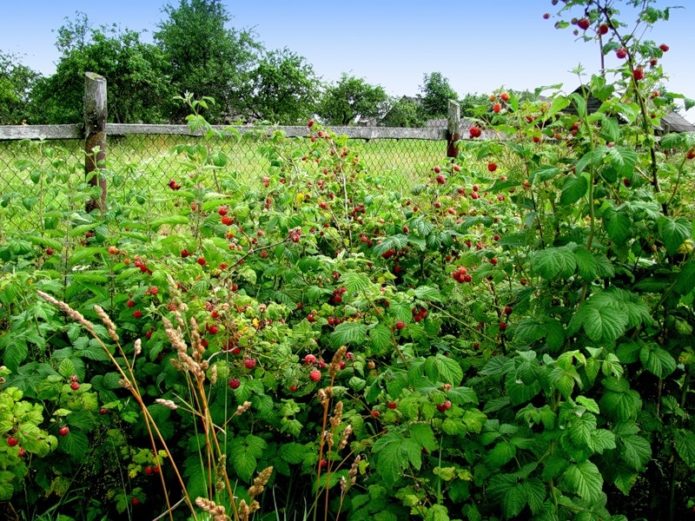
Chicken manure contains many useful substances, but it should be borne in mind that most of the fertilizer is nitrogen, so chicken manure must be diluted with water before use
Mineral fertilizers can be used in several variations:
- complex fertilizer, which contains phosphorus, potassium and ammonium sulfate, is diluted in water at the rate of 250 g per 5 liters and watered with a composition of 1 sq. m of shrub;
- a mixture of trace elements from 3 g of zinc sulfate and 5 g of magnesium sulfate is also added at the rate of 5 liters of water per 1 sq. m;
- a mixture of 50 g of wood ash and superphosphates is dissolved in 1 liter of water and watered with 1 sq. m raspberry.
Repair raspberry
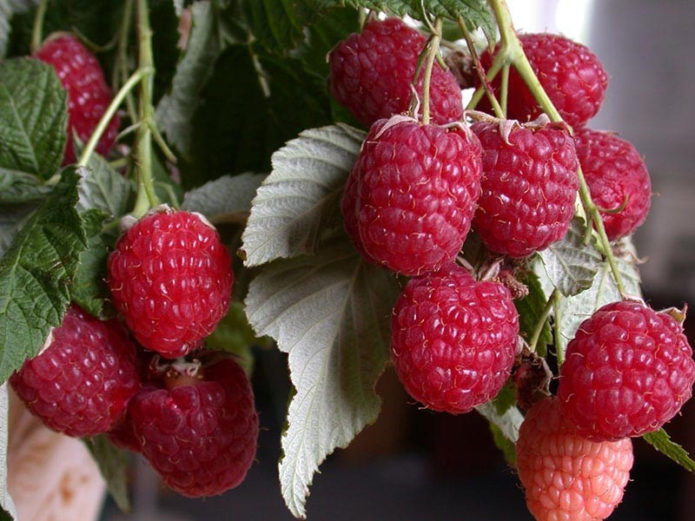
At the initial stages of cultivation, nitrogen is introduced into the soil to stimulate the growth of shoots
Remontant raspberries differ from ordinary varieties in that they are ready to bear fruit all year round, if the climate permits. But experienced gardeners know that being together on the shoots of berries and flowers takes too much energy from the plant, and therefore they recommend using this variety as an annual shrub.
To do this, in the fall, all shoots of remontant raspberries are cut off at the root, the soil is fertilized in accordance with the above-described norms, the soil is mulched and left for the winter.
In spring, the plant gives off young shoots, which, with proper care in August, give one, but a bountiful harvest.
Other options for feeding raspberries in the fall
There are several ways to feed raspberries. Gardeners, wanting to improve their yield, combine various substances. One of the most difficult but effective recipes:
- A container with a volume of 20 liters is filled 2/3 with weeds collected from the garden, hay or tops.
- Add 1.5 tbsp. wood ash.
- Put 1.5 tbsp. sugar or any jam.
- A handful of granulated chicken manure or manure is added.
- Add 1 piece of chalk.
- Top up with warm water to the edge of the container.
- Insist for 10-14 days.
- 0.5 l of infusion is diluted in 10 l of water and watered with 1 sq. m of shrub.
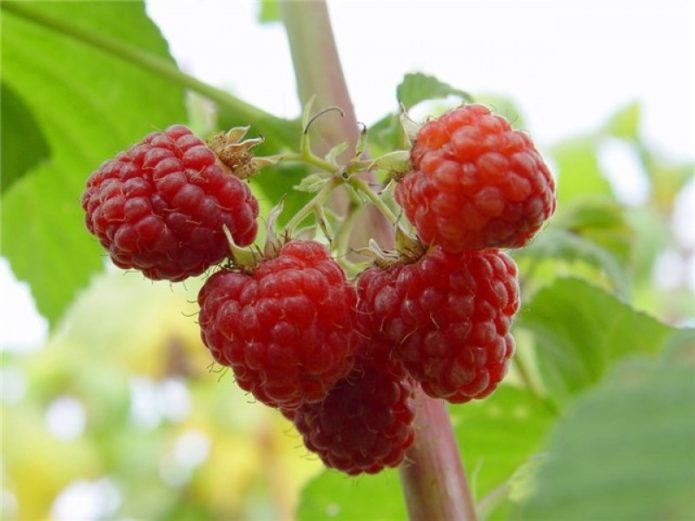
It is important to objectively assess the plant's need for nutrients, since damage to the crop can be caused by both their lack and excess.
Since in the old days there were no mineral fertilizers, gardeners successfully used the products of their own agriculture:
- Equal amounts of comfrey and nettle are poured into 10 liters of water and insisted for 14 days in the sun. Dilute with water infusion at the rate of 1:10. For 1 bush of raspberries, 2 liters of fertilizer are enough.
- 3 kg of manure, 1 tbsp. ash, 1 kg of nettle pour 20 liters of water. Leave in the sun for 1 week. Dilute the infusion in a ratio of 1:10. Watered at the rate of 1 liter per 1 raspberry bush.
What else do you need to prepare the bushes for winter
It is important not only to feed the raspberries before wintering, but also to properly prepare them for the cold weather. This process includes:
- pruning;
- removing leaves;
- removal of young shoots;
- bending or ligament;
- covering with snow (but if the raspberries are properly tied, nature will do everything by itself).
Gardeners reviews
In the autumn, it is good to use superphosphate in raspberry fertilizer, which can strengthen the branches and they will well endure the winter.
Raspberries prefer organic matter, and more specifically, manure. It must be applied in autumn in large quantities, so that during the winter it pereklyu right in the beds, which will additionally warm the roots from frost. I use mineral fertilizers, but in reasonable amounts. I spray the leaves with a special complex organo-mineral fertilizer "Growth-berry".
Nitrogen fertilizers are no less good for raspberries and after their application, the shrubs quickly grow stronger and the yield is at a high level.
It would be nice to bring 3-4 buckets of humus under the bushes every year in the fall, if not, then 3-4 buckets of peat mixed with 100 g of urea or saltpeter. Keep in mind that the use of nitrogen mineral fertilizers in the spring causes active regrowth of coppice shoots and does little for the development of replacement shoots.
Video: how to fertilize raspberry bushes
Despite their unpretentiousness, raspberries love soil rich in minerals and nutrients. With a lack of nutrition, the fruits will be small and sour. How to fertilize raspberries in the fall, each gardener chooses for himself, depending on his preferences, but this must be done in a timely manner. Then the culture will give a healthy and rich harvest.
